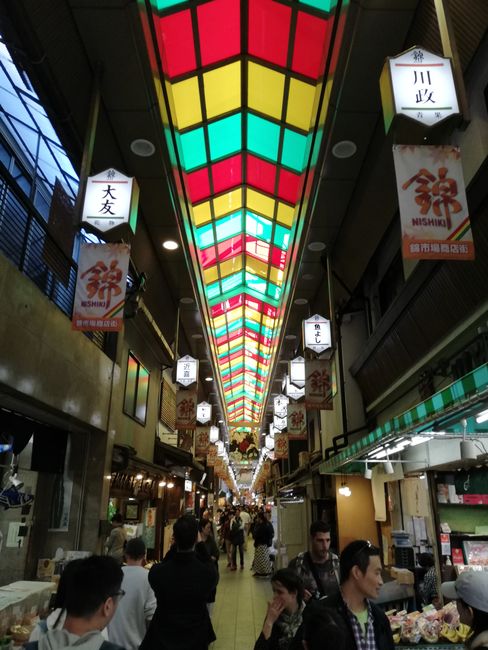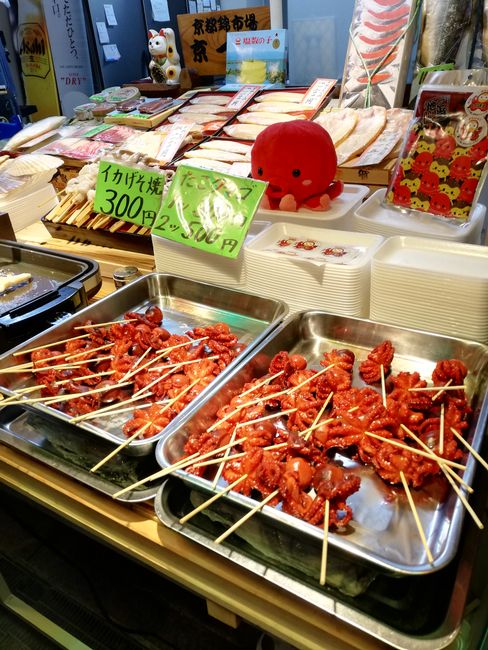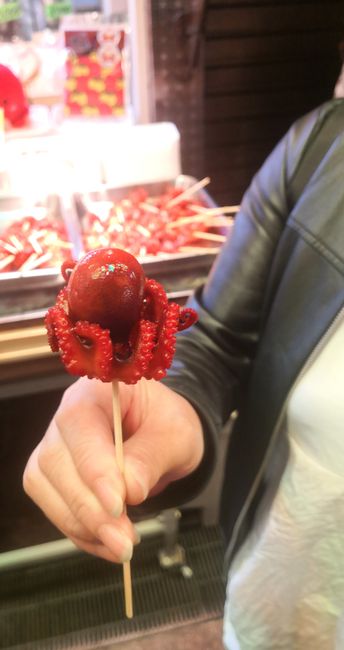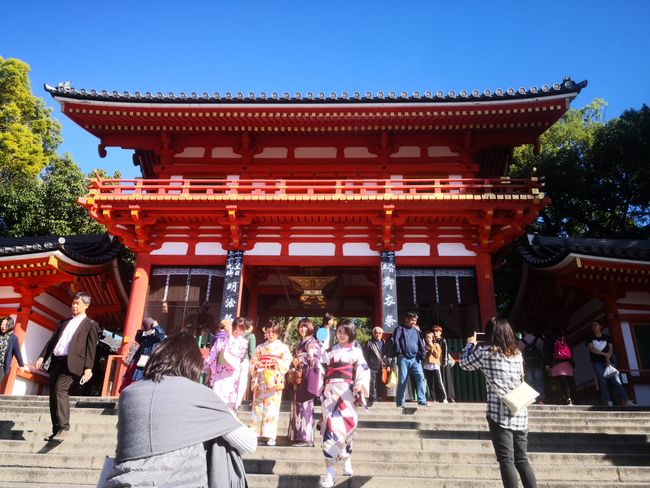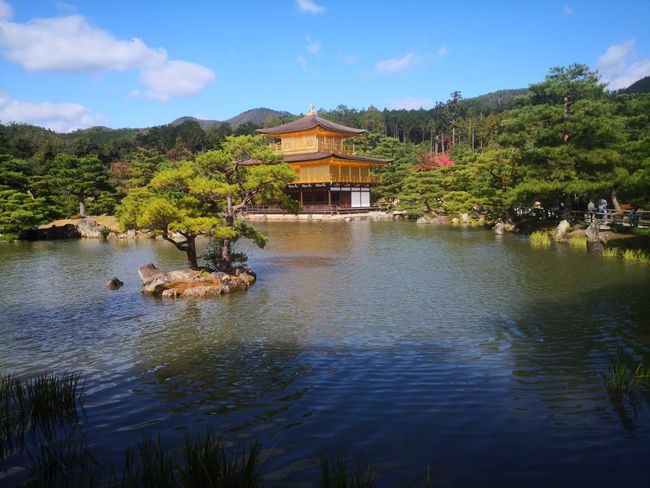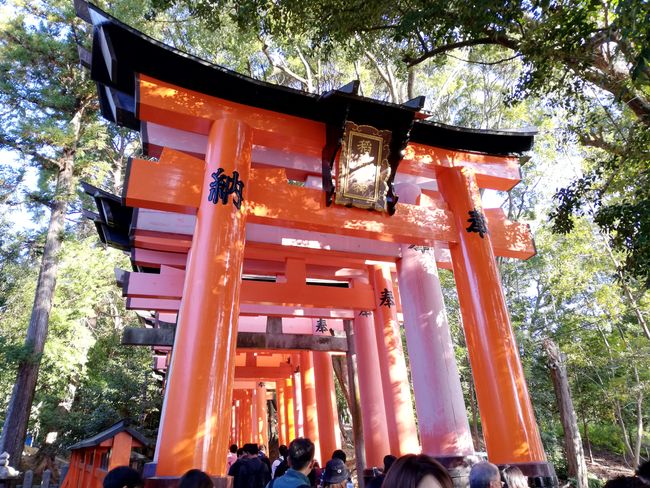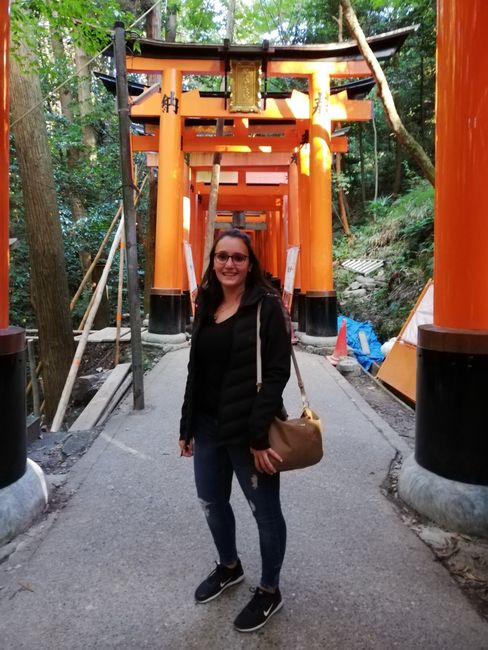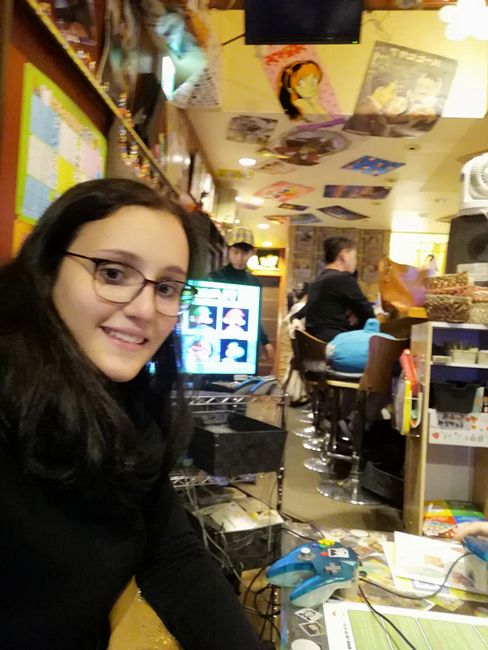Kyoto, Japan (i)
Ebifulumiziddwa: 15.11.2019
Sat 02.11.19 Today we plan to visit the local Nishiki market and Yasaka Park. The market is a long covered street. On the left and right side of the street, there are market stalls and shops. The food offer is wide and varied, with fresh fish and meat, vegetables, fruits, and spices. There are also many souvenirs for tourists. On one stall, a red octopus on a skewer caught our attention, but none of us wanted to venture into this culinary challenge. Instead, we bought traditional Japanese chopsticks, and Arnold even chose a typical kitchen knife.
Then we continued our journey to the park, once again, we came across various worship temples, and with a bit of luck, we were able to witness a wedding in typical local attire from a distance. Further ahead, we spotted Koi fish in a pond, along with some storks and turtles.
Mon 04.11.19 After spending the entire Sunday relaxing, today we have set ourselves the goal of visiting the Golden Temple.
Kinkaku-ji is a Buddhist temple, one of the most popular and visited buildings in the whole country. Among its peculiarities, the beautiful garden, designed according to the canons of the Muromachi period, considered a classical age in terms of green space design and characterized by a special attention to the relationship between buildings and the surrounding space, in a compositional harmony that has always been admired. The name of the temple derives from the golden leaf with which the pavilion is covered: Gold indeed has a strong symbolic value of purification from any kind of pollution or negative thought. Furthermore, in this case, it acts as a mirror to create a particular reflection on the underlying pond thanks to the sunlight.
Tue 05.11.19 This morning we went to explore the city of Kyoto, and Arnold bought a traditional dress as a gift for his girlfriend. So the boys got swallowed up by city life while I ventured out to discover the Fushimi Inari-Taisha Shinto shrine. This temple in the 8th century was dedicated by the Hata clan to the deities of rice and sake. However, with the role of agriculture progressively decreasing, the Inari deities were entrusted with the prosperity of trade and manufacturing industry. Just think that throughout Japan there are thousands and thousands of Shinto shrines dedicated to these deities, but the Fushimi shrine is undoubtedly the most visited and loved by believers. What determines the success of the shrine is not only the beauty of the buildings but also, and perhaps above all, the paths that run under hundreds of sacred gates, better known as torii. The shrine's red gates were all donated by believers, and the most curious can even discover the donation date and the name of the donor (in Japanese), imprinted on the back of the gate. I had a lot of fun walking through the forest among the torii, but after two hours of walking, I decided to return to the hotel.
Okuddamu


